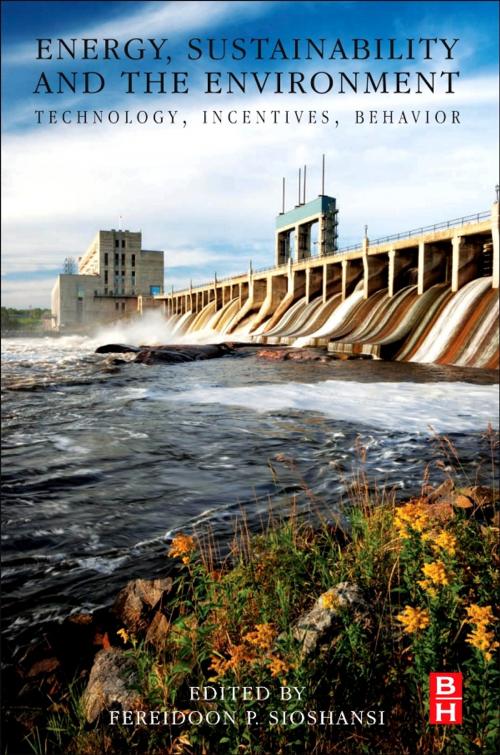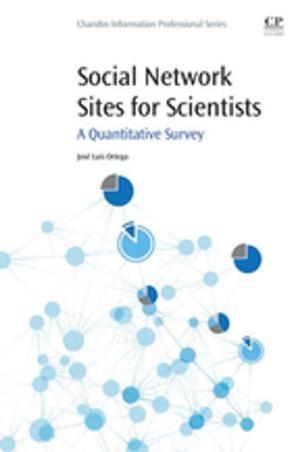Energy, Sustainability and the Environment
Technology, Incentives, Behavior
Nonfiction, Science & Nature, Technology, Environmental, Science, Biological Sciences, Environmental Science| Author: | ISBN: | 9780123851376 | |
| Publisher: | Elsevier Science | Publication: | June 2, 2011 |
| Imprint: | Butterworth-Heinemann | Language: | English |
| Author: | |
| ISBN: | 9780123851376 |
| Publisher: | Elsevier Science |
| Publication: | June 2, 2011 |
| Imprint: | Butterworth-Heinemann |
| Language: | English |
The complexity of carbon reduction and economic sustainability is significantly complicated by competing aspects of socioeconomic practices as well as legislative, regulatory, and scientific requirements and protocols. An easy to read and understand guide, Sioshansi, along with an international group of contributors, moves through the maze of carbon reduction methods and technologies, providing steps and insights to meet carbon reduction requirements and maintaining the health and welfare of the firm.
The book’s three part treatment is based on a clear and rigorous exposition of a wide range of options to reduce the carbon footprint Part 1 of the book, Challenge of Sustainability, examines the fundamental drivers of energy demand – economic growth, the need for basic energy services, and the interdependence of economic, political, environmental, social, equity, legacy and policy issues. Part 2 of the book, Technological Solutions, examines how energy can be used to support basic energy service needs of homes, commercial and industrial facilities and for other applications. Part 3 of the book, case studies, covers a number of innovative projects, initiatives, concepts or self-imposed targets in different parts of the world with the aim of significantly reducing energy use and carbon footprint of a company, a community, a city or an entire country.
There was a widespread recognition among environmental engineers and energy economist of the importance of carbon reduction while sustaining the firm’s economic growth. The only book to bring together both subjects into one easy to understand reference, Carbon Reduction and Economic Sustainability not only clearly explains which option has the lowest energy/carbon footprint but also which option would better suit the business in question. This includes carbon reduction for residential, transport, industrial and public sectors.
- The only book to clearly explain the economic and environmental engineering aspects of carbon reduction.
- Case studies taken from a number of international projects.
- Carbon reduction options for all sectors of society.
- The role of the planning system in carbon reduction.
The complexity of carbon reduction and economic sustainability is significantly complicated by competing aspects of socioeconomic practices as well as legislative, regulatory, and scientific requirements and protocols. An easy to read and understand guide, Sioshansi, along with an international group of contributors, moves through the maze of carbon reduction methods and technologies, providing steps and insights to meet carbon reduction requirements and maintaining the health and welfare of the firm.
The book’s three part treatment is based on a clear and rigorous exposition of a wide range of options to reduce the carbon footprint Part 1 of the book, Challenge of Sustainability, examines the fundamental drivers of energy demand – economic growth, the need for basic energy services, and the interdependence of economic, political, environmental, social, equity, legacy and policy issues. Part 2 of the book, Technological Solutions, examines how energy can be used to support basic energy service needs of homes, commercial and industrial facilities and for other applications. Part 3 of the book, case studies, covers a number of innovative projects, initiatives, concepts or self-imposed targets in different parts of the world with the aim of significantly reducing energy use and carbon footprint of a company, a community, a city or an entire country.
There was a widespread recognition among environmental engineers and energy economist of the importance of carbon reduction while sustaining the firm’s economic growth. The only book to bring together both subjects into one easy to understand reference, Carbon Reduction and Economic Sustainability not only clearly explains which option has the lowest energy/carbon footprint but also which option would better suit the business in question. This includes carbon reduction for residential, transport, industrial and public sectors.
- The only book to clearly explain the economic and environmental engineering aspects of carbon reduction.
- Case studies taken from a number of international projects.
- Carbon reduction options for all sectors of society.
- The role of the planning system in carbon reduction.















